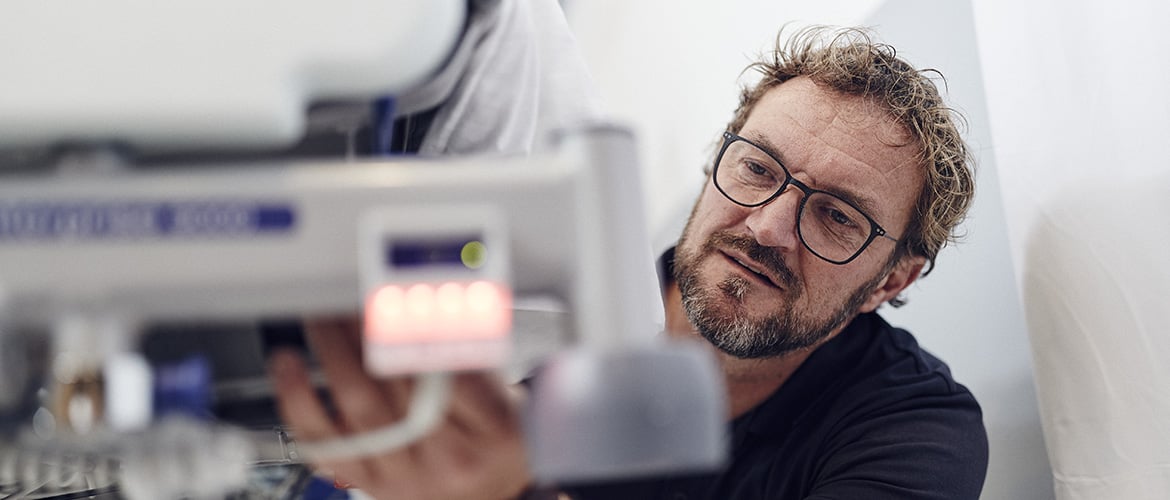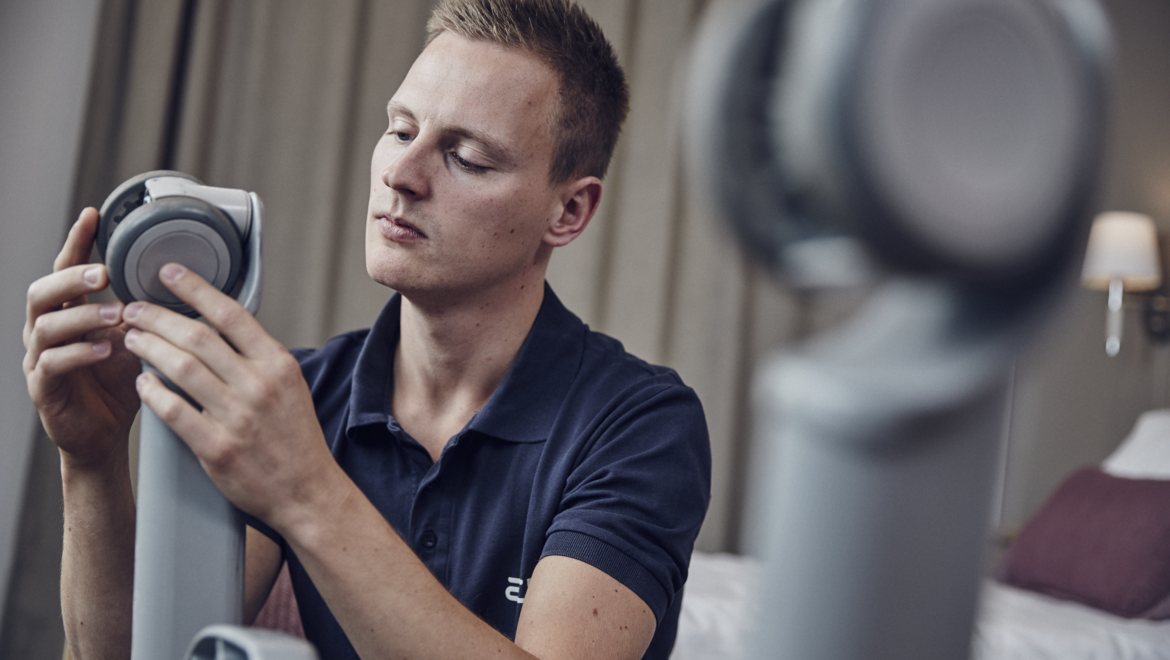What Makes Our Genuine Parts “Genuine”?
We define genuine parts as parts that have been thoroughly validated to be compatible with our equipment. Arjo experts explain this meticulous process, and what makes it all worthwhile.
Björn Hoveman is an engineer manager from the Arjo research & development team in Malmö, Sweden. When asked about the difference between validating Arjo care equipment and validating replacement parts, he sees them as one and the same.
“When we say we test our equipment, that means we test every single part that goes into the equipment,” Björn explains.
“Arjo equipment is always validated with all their parts. Some parts are designed and produced by Arjo, while some parts are sourced by parts manufacturers. But they are always, always, always tested on our products to ensure they work as they should, for as long as they should.
“A significant portion of the product development process is dedicated to this verification. When we start designing a product, we outline a long list of requirements that this product has to meet. We get the first set of parts, assemble them and test them, see what happens, and go back to the drawing board. This goes on and on and we keep fixing and adjusting until it passes every test, standard, and requirement.”
Even when a prototype is fully assembled and working, the validation work is far from over.
“We also test that the equipment will work for as long as its recommended lifetime,” says Johanna Dennbo, a design assurance manager specialising in hygiene.
“For example we may place the maximum safe working load into an adjustable-height bath tub, then lift it up and down thousands of times. We may run the disinfection system hundreds of thousands of times. This process helps us understand how long the product lasts, but also which parts may wear out sooner and how often they should be replaced as a result, as well as the recommended service maintenance schedule.”

As Arjo products are sold in over 100 countries, they have to meet many local and international requirements, most of which are intended to protect those who give and receive care.
“We observe so many different standards and regulations, partly because our products are produced and sold all over the world, but more importantly because safety is the most important factor when our products are used to assist people,” explains Björn.
“We have to consider more than the product’s direct purpose, but also what it should be expected to withstand in its use environment. A medical bed, for example, must hold up the weight of a patient, but consider the side rails: Caregivers will bump into these all day, and patients will use it to support their weight. At the same time, it must collapse quickly so that patients can move out of bed, and caregivers can reach the patient. These are just some of the requirements we will test for.”
“When we make a product, every decision we make revolves around safety,” says Jean-Philippe Boulianne, an Arjo design assurance manager for patient handling equipment in Magog, Canada. “We are always thinking about the possible risks to patients and caregivers in a care setting, and put additional effort into minimising these risks.”
“A lot of our testing is validated externally, by neutral third parties. They are not affiliated with us and we don’t influence their decision, and the only way we will get their seal of approval is if our products pass their tests,” adds Jean-Philippe.
“In the case of patient handling equipment, we often need to bring in actual healthcare workers to test the equipment for us too. During development, we may test the equipment with a stack of metal weights, but the user is never going to be a stack of metal weights. They are thinking, feeling humans with different shapes, sizes, movements, and needs.”
When the product finally passes all necessary tests and is released for sale, does the validation work end there?
“After a product is released to the market, we continue watching its performance trends. We meet every month for a DCHU (Designated Complaint Handling Unit) review to get feedback from the field and log all complaints, faults, replacements and repairs,” reveals Olivier Custeau-Boisclair, an Arjo design manager who is also based in Magog. “Based on this log we will look out for recurring issues, for example if a battery seems to be replaced pretty often, we will look into why that is the case, and see if we can improve it for the customers.”
“We also ensure the parts are available throughout the recommended life span of a product. This includes wheels, batteries, every possible component that would need to be replaced, even when we make the decision to discontinue that product,” says Jean-Philippe. “Our promise to the customer is that if this equipment is adequately serviced it should be useable for its expected lifetime, and we commit to that promise.”
“If we have to find a new supplier for a specific part, even if they are replicating that part exactly to the letter, we still have to perform validation tests again to certify that it meets the same quality and compliance requirements,” adds Björn.
It should come as no surprise that product validation involves a large team across many different functions around the world.
“Just at the early stages of product development, I work with a core team of ten different functions. Once we go into testing stages we could include 20 to 30 secondary collaborators, such as quality and compliance, external testing labs, regulatory bodies, suppliers, and more,” says Jean-Philippe.

“Our product development process can take years because there is so much that goes into testing and validating it, and to meet our long list of requirements and expectations,” says Olivier. “When safety is the issue, it’s worth taking the time and going the extra mile.”
“Trying and testing it is the surest way to guarantee the safety parameters we have promised,” says Johanna. “So this is really, really important and really, really worth the time and investment.”
“It’s worth it because our equipment is used by people with health challenges, and people who work in the healthcare sector,” adds Jean-Philippe. “We want to support them to achieve better outcomes.”
Contact your local Arjo representative to ensure genuine parts are included in your service agreement.





